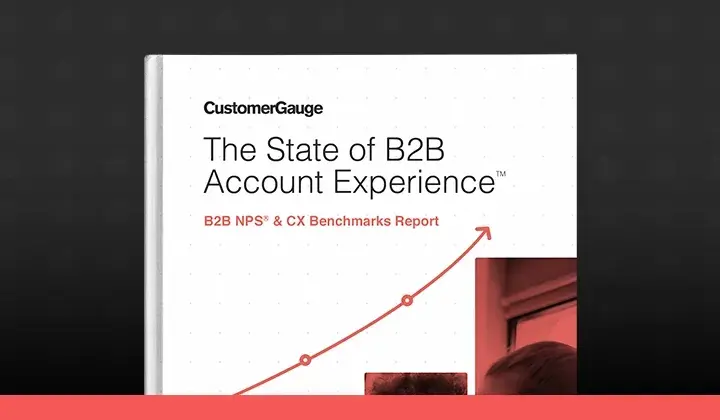We explain how using NPS as a KPI can create a more accurate picture of your company’s health.
What other KPIs miss
To begin, let’s take a look at a classical KPI: revenue. There are many types of revenue based KPIs. Net profit margin, gross profit margin, and revenue growth rate are just a few, but they are all based on measuring the financial performance of a company.
A revenue-based KPI means measuring a company’s revenue by product line, team, store, etc. over a period of time. Compare current numbers to previous periods and you can see how revenue is performing. However, when revenue is rising this index seems to be a good way to understand company growth, but when revenue starts to fall this index presents a lot of problems and not many answers.
Outside of company induced actions such as price changes, a lower than expected revenue might be the result of a failure by marketing or sales, or maybe it’s due to the loss of existing customers. Most of the time it’s a bit of both. For as all companies experience churn, revenue loss is simply a mixture of how well a company can acquire new customers and the number of customers that churn.
But using revenue as an index is problematic because it’s a lagging indicator. The results that are received are the symptoms of causes that have already long since occurred.
Falling revenue means customers aren’t willing to purchase from you/remain loyal and have been this way for a while. And what is keeping customers away or causing them to leave, started even earlier than their actions. Using revenue then as a KPI is a measure of the effect not a measure of the cause and once the effect has happened the loss has already long since occurred.
Why NPS works
If something is wrong and revenue is dropping, marketing and sales KPIs can help you see ahead of time that this may happen (depending on how well you retain customers), but they have little capacity to tell you why.
Using the Net Promoter System as a KPI helps companies take better control over their revenue by measuring customer loyalty. By investigating directly the loyalty of individual customers, companies don’t have to wait for revenue figures to realize there is a problem, but can immediately see that their customer base is losing loyalty and learn why.
Knowing why customers lack loyalty enables companies to not only improve the experience of existing customers and rescue them, but it also helps companies uncover what is turning away potential customers.
Although it differs by industry and business model, existing customers and potential customers have many overlapping experiences. For example price changes, website experiences or in-store service are something that both new and existing customers experience. By understanding what your existing customers don’t like, you can help improve the experience for potential customers too.
How to use NPS as a KPI
How to use NPS as a KPI is not difficult, and there are many creative ways to do it. The most common way is to use the Net Promoter Score as the KPI. If the score drops significantly, then there is something starting to affect customer satisfaction.
Others choose to use NPS as a case resolution KPI. In this process, companies first define which customer responses require a response, for example, customers that score a company 0 - 4. For those that require a response then, they count the number of cases they close with a positive outcome. This method is typically used by companies that have NPS positioned in customer support/service teams.
While in the software industry, one CustomGauge client Ansarada, uses NPS as a KPI in product development. As new software products or features are developed, the company measures how many pieces of individual NPS feedback are addressed by it.
When using NPS as a KPI make sure to reward people or teams for it, as there is no point setting standards to meet if employees don’t have a motivating factor to get there. This reward can be bonuses, but financial compensation is far from the only way to motivate people. There are many creative ways that companies can reward their employees for a job well done.
However, while motivating and rewarding NPS objectives, employees should not be punished or reprimanded for failing to meet an objective. NPS is not a tool to evaluate and rank the competency of your employees, as there will be instances where it is impossible to improve customer satisfaction, and this won't be the employees fault.
Lastly, if you are using NPS as a KPI make it visible throughout your organization. Put up digital displays with the results or use an intranet that all employees see to make sure it is known across the company.
Be careful
Using NPS as a KPI is a great way for companies to really improve the experience they provide to grow revenue. However, using it blindly as a KPI is not a good idea, it needs to be considered whether it is the right fit for the position your company is in.
If your NPS is already 60+, using it as a KPI that you want to improve upon might become quite frustrating for you and your fellow employees. With scores this high your customers are very satisfied and loyal, and making improvements becomes very difficult.
Be careful when comparing scores across different periods too. Did you measure it in the same way? If you measured a transactional score during one period and a relational score in the next, then comparing the two shouldn’t be done. If using NPS as a KPI, make sure to keep all the properties the same from month to month.
NPS measures real-time company health
Using NPS as a KPI does not mean abandoning other KPIs, but it is a metric that should be used to help compliment other KPIs. NPS is not a lagging metric, it is about the health of your customers and your company today. It gives you the ability to identify customer experience problems that may significantly affect your future revenue and solve these issues before they become too big.
To learn more about how the Net Promoter System can help you know your customers better and improve your experience today try our Net Promoter tool.


